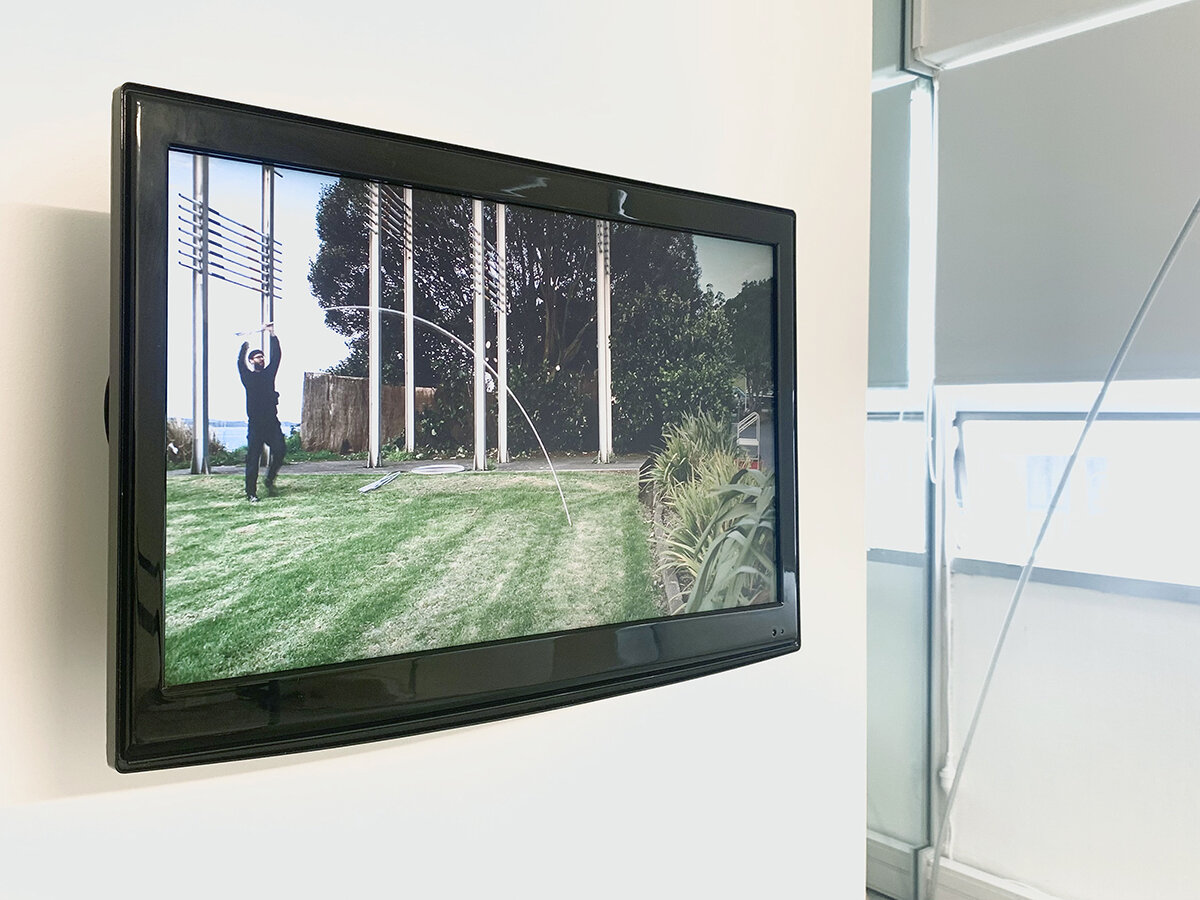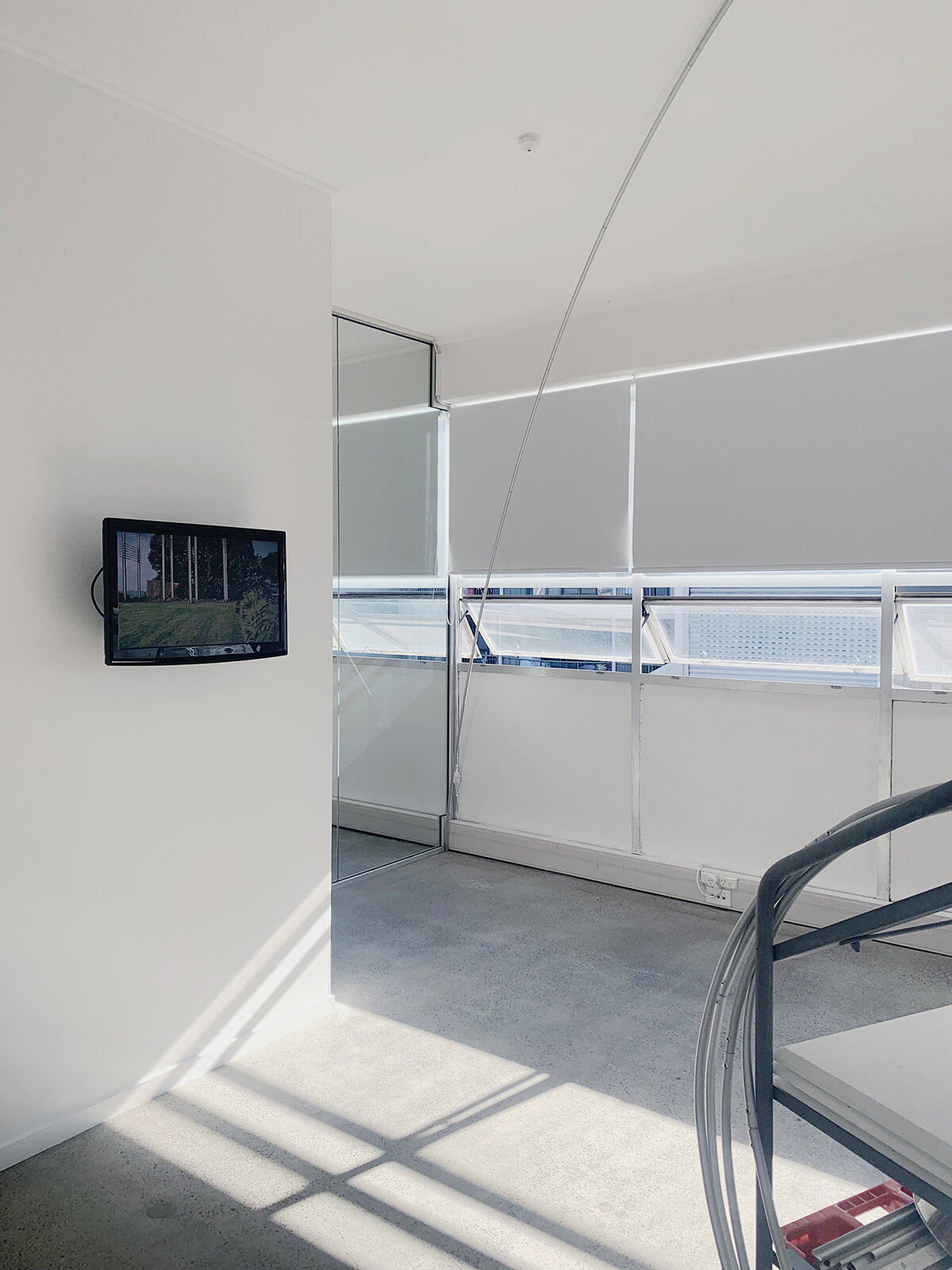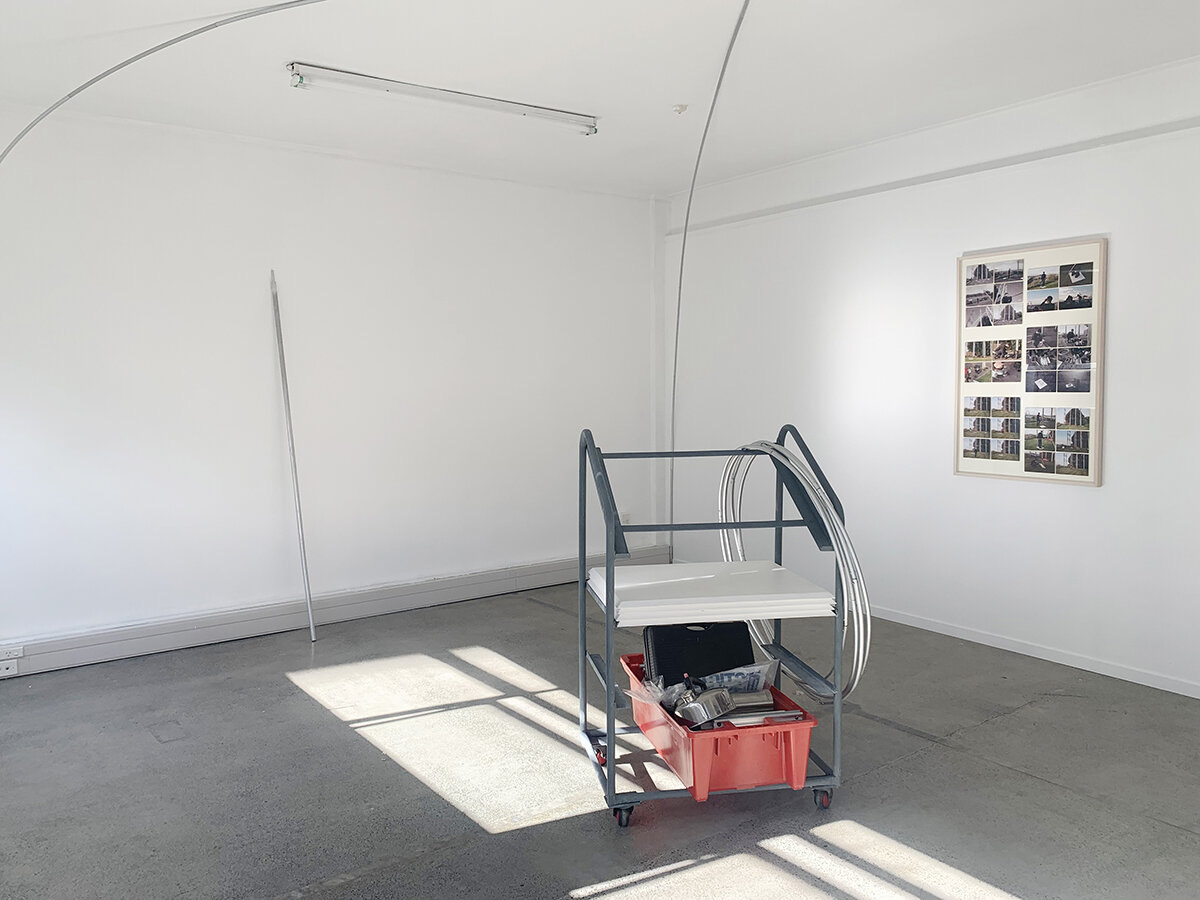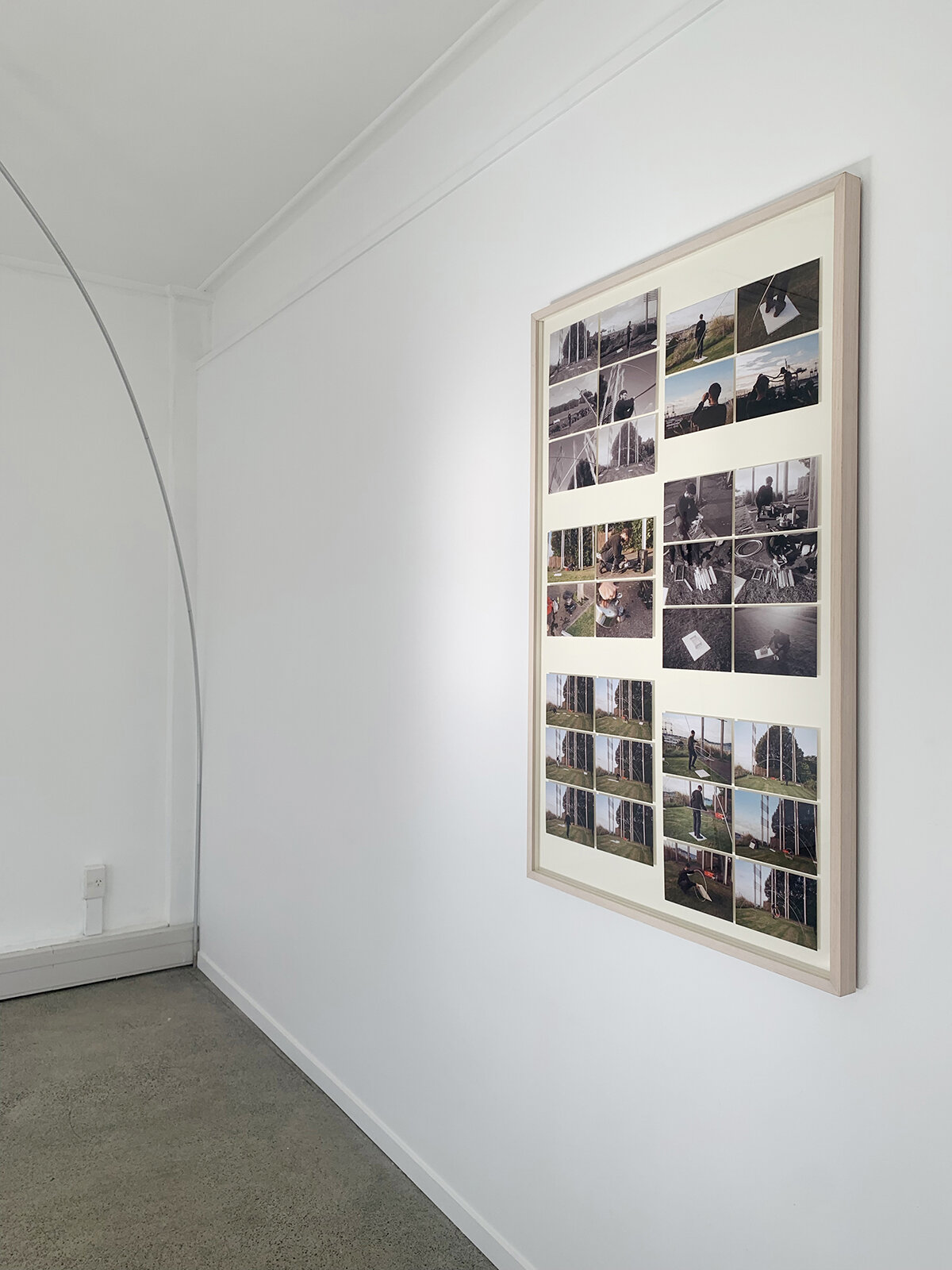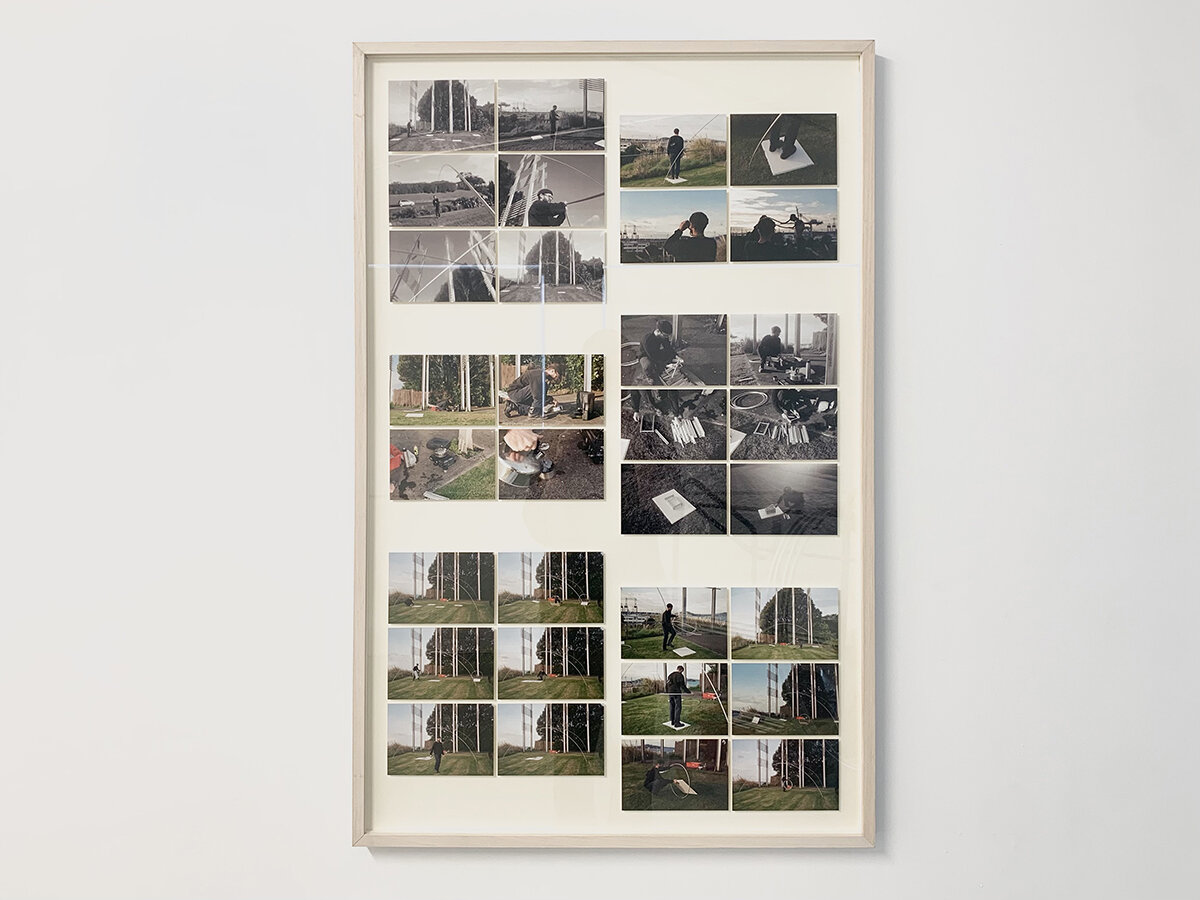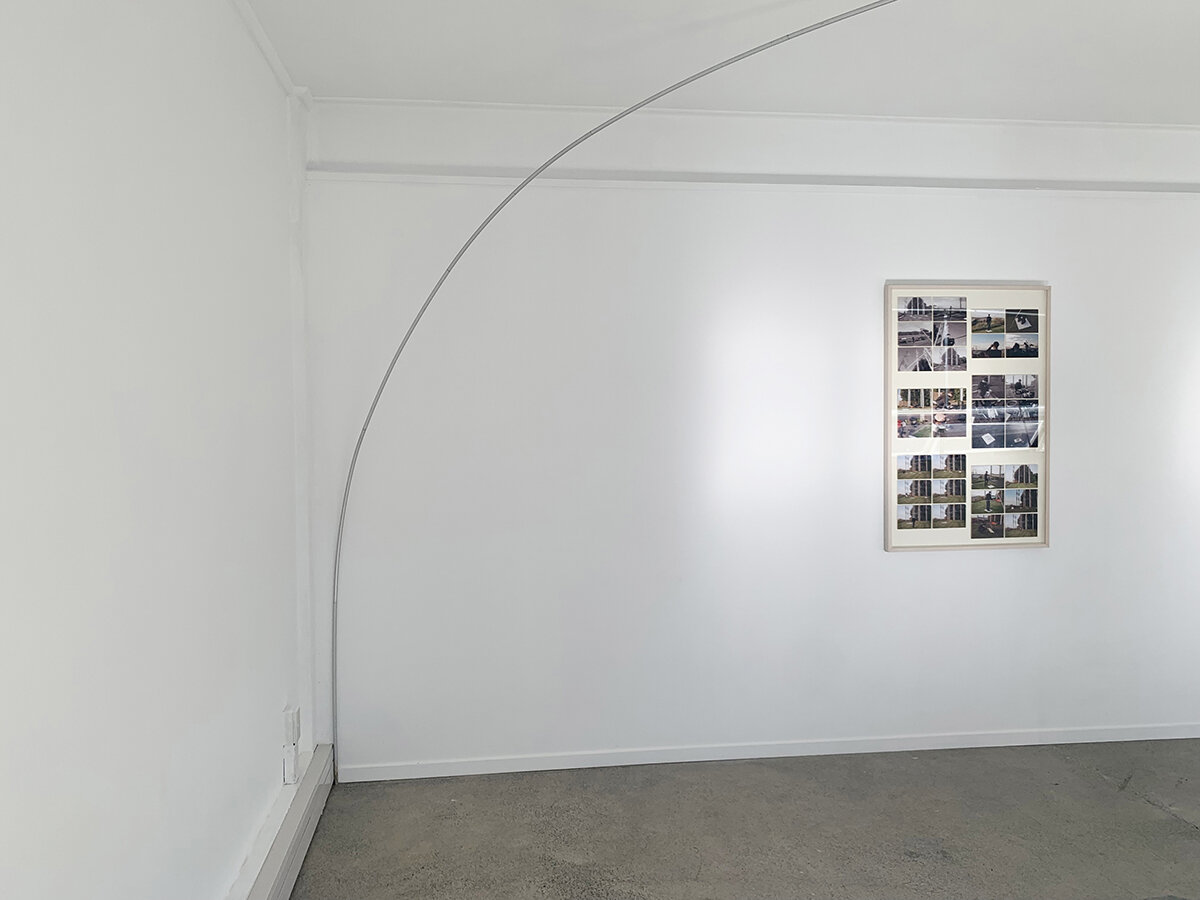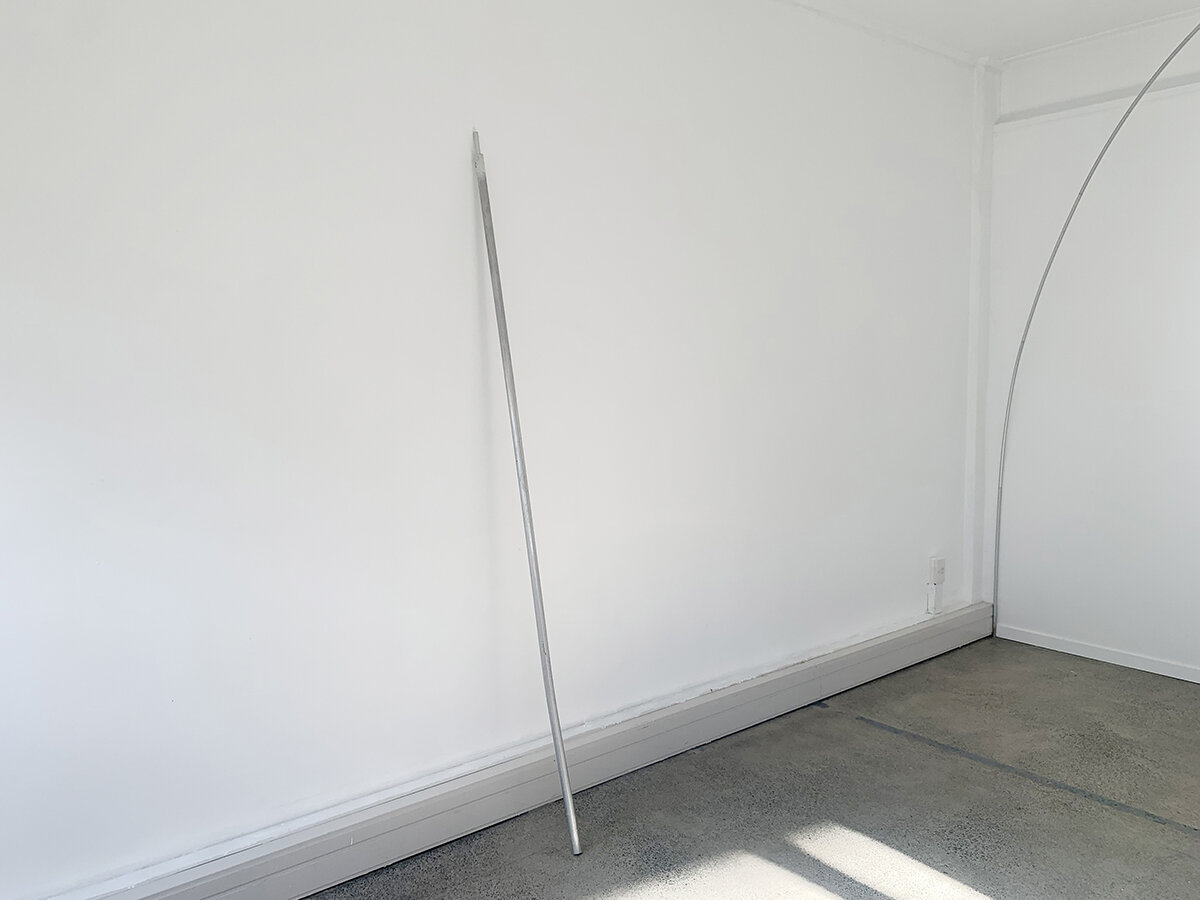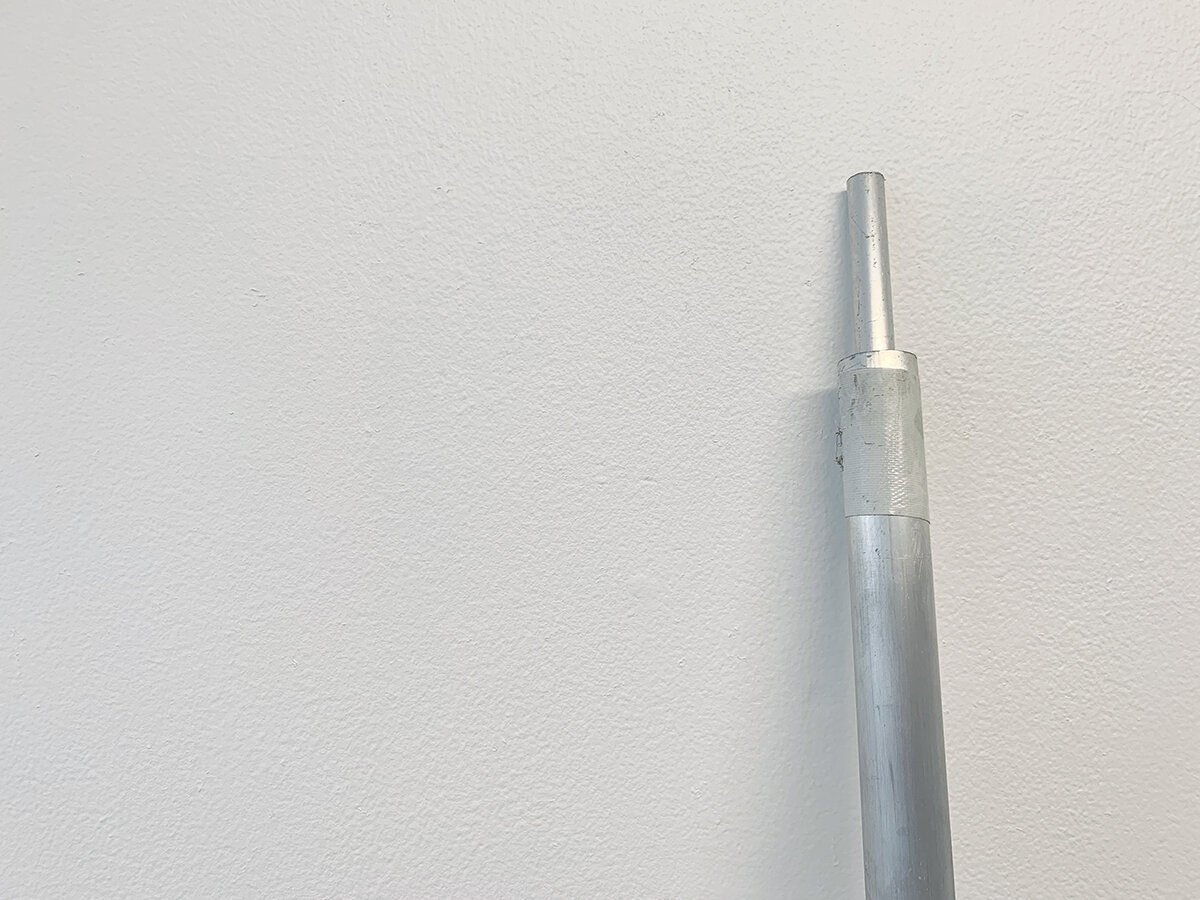RM Gallery / 3 Samoa House Lane, CBD, Tāmaki Makaurau / 9 June - 3 July 2021
Structure Signalling (Logical Structure or Relating to Something That Happened)
May 27th 2021
Looking for Signal
Looking for Escobedo
Where is Elena?
A conversation with interrupted events
The language of interruptions
I lose signal four times every work day. The first time is when the Southern Line train goes through the tunnel before Parnell. The second time is when the train enters Britomart Train Station. Then reverse when I catch the train home. The signal loss is barely noticeable. It just suspends events in time. If I’m on a phone call, the line doesn’t cut but neither person can hear each other for a minute or so. If I click a link on my phone, the page takes a little longer to load.
The Encyclopaedia Britannica defines “signal” in a communication context as “an interruption in a field of constant energy transfer.” For example, “dots and dashes that open and close the electromagnetic field of a telegraph circuit,” the “tapping of a pencil in a silent room,” or “puffs of smoke rising from a mountaintop.” It describes the changes in a single environmental factor as “interruptions.” It is the interruptions that give meaning to the event that is being interrupted. It is a series of interrupted events that creates a language.
Signals is the name of the late Mexican artist Helen Escobedo’s sculpture installed at the Fred Ambler Lookout. In 1971, Escobedo was one of four international sculptors flown to Aotearoa to participate in an international symposium commemorating Auckland City’s centennial. In an interview for a National Film Unit production about the four sculptors, Escobedo said when she visited the lookout for the first time she “realised it was such a beautiful sight, there was no point in interfering with it — I had to, rather, enhance it. In other words, one had to see through this thing.”(1) Escobedo worked with steel beams and aluminum tubes fabricated in Aotearoa to create the four forms that look like cross-sections of scaffolding.
When Signals was first installed it may have appeared as interruptions or interventions on the periphery of the city. Each form defines the world that surrounds it. The nature that fills the garden, once a neutral backdrop to the lives of those who passed through it, becomes active and material, no longer “pristine and external to modern urban life.”(2) Together the four forms that make up Signals and the world in between create a language — the interpretation of which depends on the actions of the audience that views it.
Over time language can be lost. After half a century the sculpture has become so integrated into its surrounding environment, like the nature it was intended to reactivate, we may have learned to unsee it. Deeply immersed in our routines, the runner runs, the walker walks. Onwards and onwards. Repeat and repeat. Only a lone seagull understands. It perches on one of the rungs of the sculpture for a brief, contemplative break.
As the Southern Line train leaves Parnell and enters the tunnel, just down the hill from the sculpture my signal drops out. However, a signal lost will return again, it’s just a matter of time.
Eloise Callister-Baker
1. https://www.nzonscreen.com/title/four-shapes-for-four-spaces-1972
2. https://pdfs.semanticscholar.org/483e/f11f9a99f4302bede1cb03191977f899c032.pdf
An event exists within another event in time, like the flow of water through states of solidity(graspable), liquid and vapour(seemingly ungraspable). The flow continues to expand along with the proximity to an episode or an event.(1) I look into a window toward the present while simultaneously out a window at the past.
The event in focus for this project is Mexican artist Helen Escobedo’s sculpture Signals, installed in 1971 at Fred Ambler Lookout, Parnell. I consider the structure of Signals as a past event, one that embodies the action of looking, questioning what is going on around it. A structure labouring through time with the weight of Escobedo’s argument that sculpture should be functional.(2) Structure Signalling (Logical Structure or Relating to Something That Happened) considers play as a potential function, using installation, drawing, video and photography as a means to consider an actor’s proximity to an event. Precedence for engagement originates from the fact that bodily actions are informed by surrounding objects that are inseparably a part of each other.(3)
Author Milan Kundera points out that in Aristotle’s Poetics, ‘the episode’ is an important concept. Aristotle did not like episodes. According to him, an episode, from the point of view of poetry, is the worst possible type of event. It is neither an unavoidable consequence of preceding action nor the cause of what is to follow: it is outside the chain of causal events that is the story. Life is as stuffed with episodes as a mattress is with horsehair, but a poet (according to Aristotle) is not an upholsterer and must remove all the stuffing from his story, even though real life consists of nothing but precisely such stuffing.(4) The ‘stuffing’ of an event is precedent for engagement. In the case of this project, the stuffing in focus is the aesthetic decision to not clutter the bald quality of Signals with curvilinear clambering elements at the structure’s base.(5) This means there is fifty years of clambering among clutter that never eventuated; this stuffing is the potential of play.
Through the process of exploring the site where Signals is installed and its surrounding objects, I ask what or whom [controls] the meaning and content of [this current moment], and how much does meaning derive from this new time and space realisation?(6) The shifting meaning of an event brings potentials of the seemingly static past toward the fleeting present. The result being a bricolage of fragments. Processes of making acknowledge material as lived-experience, stuffing that is composed of engagement with peripheral surroundings. In asking, “what is going on?” we seek signals to form a logical structure in a naïve effort to relate to something that has already happened, questioning perspective, intention, uses of time, and the expectation of outcome.
J.A. Kennedy
June 9th 2021
1. Derrida, J. (1966) Structure, Sign, and Play (In Writing and Difference (1978), Trans. Alan Bass) University of Chicago Press, Chicago. 278.
2. (Documentary of the International Sculpture Symposium, 1971. Directed by Arthur Everard.) Four Shapes for Four Spaces (1972), 10:08 - 10:34 (Escobedo talking on happenings and an artist existing and belonging in a “...natural environment”) https://www.nzonscreen.com/title/four-shapes-for-four-spaces-1972/overview (Accessed since 18-4-19)
3. Burnham, J. (1971) The Structure of Art, George Braziller Inc, New York, 29.
4. Kundera, M. (1990) Immortality, (Trans. Peter Kussi, 1991), Harper Perennial, New York. 313. (Excerpt originally found in a folder at the Paul Cullen Archive, Henderson. 3-4-21)
5. (Correspondence between Jim Allen and Helen Escobedo.) International Sculpture Symposium 1971, Archive date range: 1969-1981 E H McCormick Research Library, Auckland Art Gallery Toi o Tāmaki, Accession no: RC2010/5 (Accessed 18-4-19 and 23-2-21)
6. Conland, N. (2018) The Politics of Erasure: The Artists et al. (In Reading Room, Politics of Denial (2018), Issue 08.18 E.H. McCormick Research Library, Auckland Art Gallery Toi o Tamaki. 88.
Works:
Playing Next to Escobedo’s Signals, 2021.
single channel video with sound.
8:43 min.sec
Logical Structure, Fragments of Play, 2021.
Steel frame on wheels, aluminium rings, painted plywood,
red plastic box, aluminium parts, glue, portable stove, kettle,
plastic ice bag, vacuum flask, water.
960 x 910 x 1235mm
Space Between, Something That Happened, 2021.
32 digital prints from 35mm film, framed.
740 x 1140 x mm
Limitations of Play, 2021.
collapsible aluminium tubes, elastic rope.
installation, dimensions variable.
To be Painted White, Yellow, and Green, 2021.
aluminium tubes, duct tape.
2070 x 25mm
